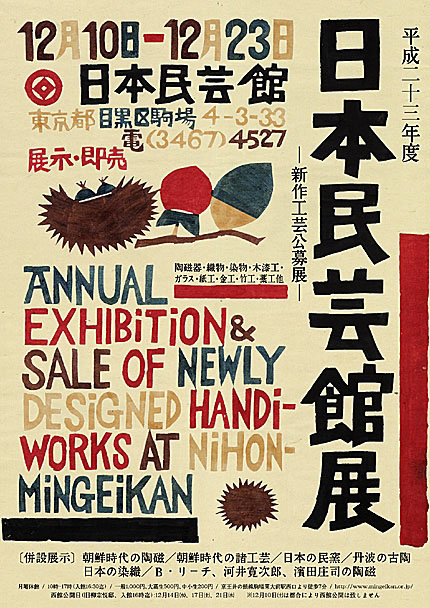As people in Japan prepare to celebrate New Year's Day, among the most notable tasks of the season are housecleaning, which echos the timeworn ritual of susuharai ("cleaning soot from the timbers under the roof") and placing shimenawa (sacred straw rope traditionally hung at the entrance to Shinto shrines) or kadomatsu (pine and/or bamboo decorative arrangements) at the entrance of the home.
But what are the origins of these practices, and how did they become symbolic of the start of the New Year's celebrations?
These customs were born from the belief that a house prepared through cleansing and purification, and placing freshly created ornaments at its main entrance, provides a welcoming environment for deities to visit the home and bless it during the New Year's season.
In addition to the many fanciful arrangements you'll likely see at people's homes this time of year, the Japan Folk Crafts Museum in Tokyo is providing a wonderful opportunity to see New Year's decorations fashioned by some of the most skilled hands in the country. The museum's annual New Works (Shinsakuten) craft competition receives entrants from all over Japan, who submit an array of traditional crafts including pottery, ceramics, woven textiles, lacquerware, bamboo crafts and Japanese washi (handmade paper) creations. The winning works of the competition are not only on display in the main gallery of the museum, they are also available for purchase.
The New Works craft competition dates back to 1936, the year that the Japan Folk Crafts Museum was opened by its founder, Soetsu Yanagi (1889-1961). Yanagi was a great supporter of local crafts and became a spokesman for artisans, advocating the recognition of folk crafts as an art form. From the year of the museum's opening, he annually hosted the competition and exhibition to provide craftsmen an opportunity to show their crafts and also sell them.
Every object on display has been lovingly handmade and recalls a time when folk crafts were at the heart of the Japanese decorative arts. Among these entries are several of spectacular traditional New Year's decorations that are well worth seeking out.
Last year's Grand Prize winner was a magnificent pair of shimenawa. They depicted symbols of longevity — one in the shape of a turtle with a long tail, the other of a crane flying toward the sun. Created by a farmer, Mitsuo Kumada, the rope was made with freshly harvested straw, giving the ornaments a vibrant green color. Kumada spent 40 years honing his skills to create such highly intricate three-dimensional works of art, and when he received his prize he told his audience that he hoped that his work would arouse a new-found appreciation of traditional Japanese crafts.
The rope that is the basis for shimenawa dates back to ancient times when it was believed to hold divine powers to ward off evil spirits. It symbolizes the boundary between the profane, everyday world and the sacred world. Just as shrines are symbolically purified and cleansed, the Japanese home is meticulously prepared for the new year by conducting a "spring cleaning" prior to placing the shimenawa or kadomatsu at the entryway.
A second type of ornament associated with New Year's and on display at the exhibition is the omikikuchi, a bamboo filament sake-bottle top — a rare sight in modern-day Japan. Designed as felicitous ornaments, they were used to decorate the top of porcelain sake bottles, which were offered to the gods. To make them, bamboo is thinly split into filaments, then bent into fanciful shapes and symbols of good luck such as birds, fruit, flowers, flames and treasure boats. To make them into elaborate bottle tops, the ornaments are bound with white, gold or red string. Many visitors to the exhibition come from all over Japan just to admire these rarities and collect them.
This year's "Exhibition and Sale of Newly Designed Handiworks" promises, as in previous years, to be a show-stopper, with more than 1,000 works submitted from all over the country. When you visit, be sure to also check out the seasonal New Year's decorations among all the fascinating crafts.
"Exhibition and Sale of Newly Designed Handiworks" at Mingeikan, The Japan Folk Crafts Museum, runs till Dec. 23; admission ¥1,000; open 10 a.m.-5 p.m., closed Mon. For more information, visit www.mingeikan.or.jp.



















With your current subscription plan you can comment on stories. However, before writing your first comment, please create a display name in the Profile section of your subscriber account page.